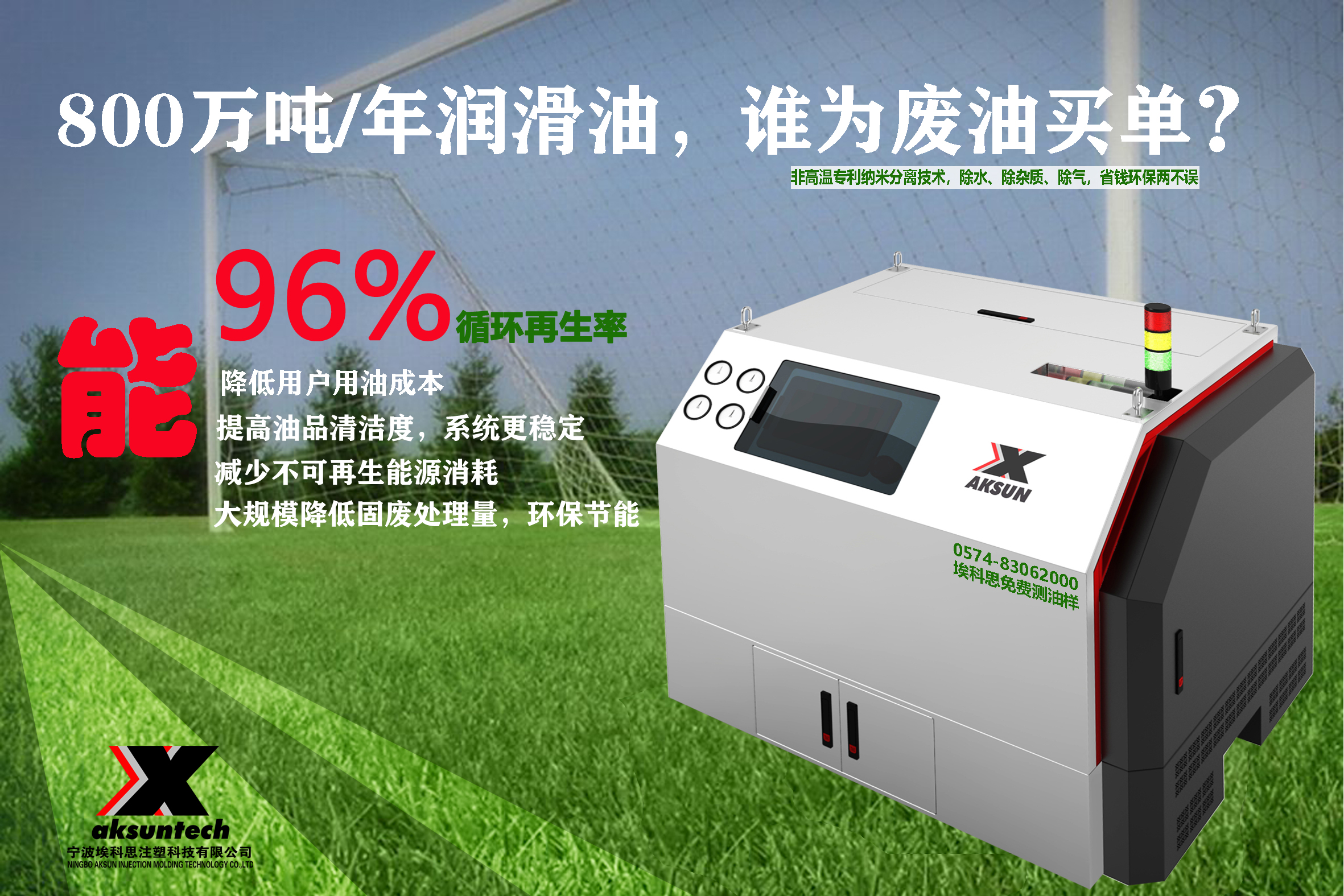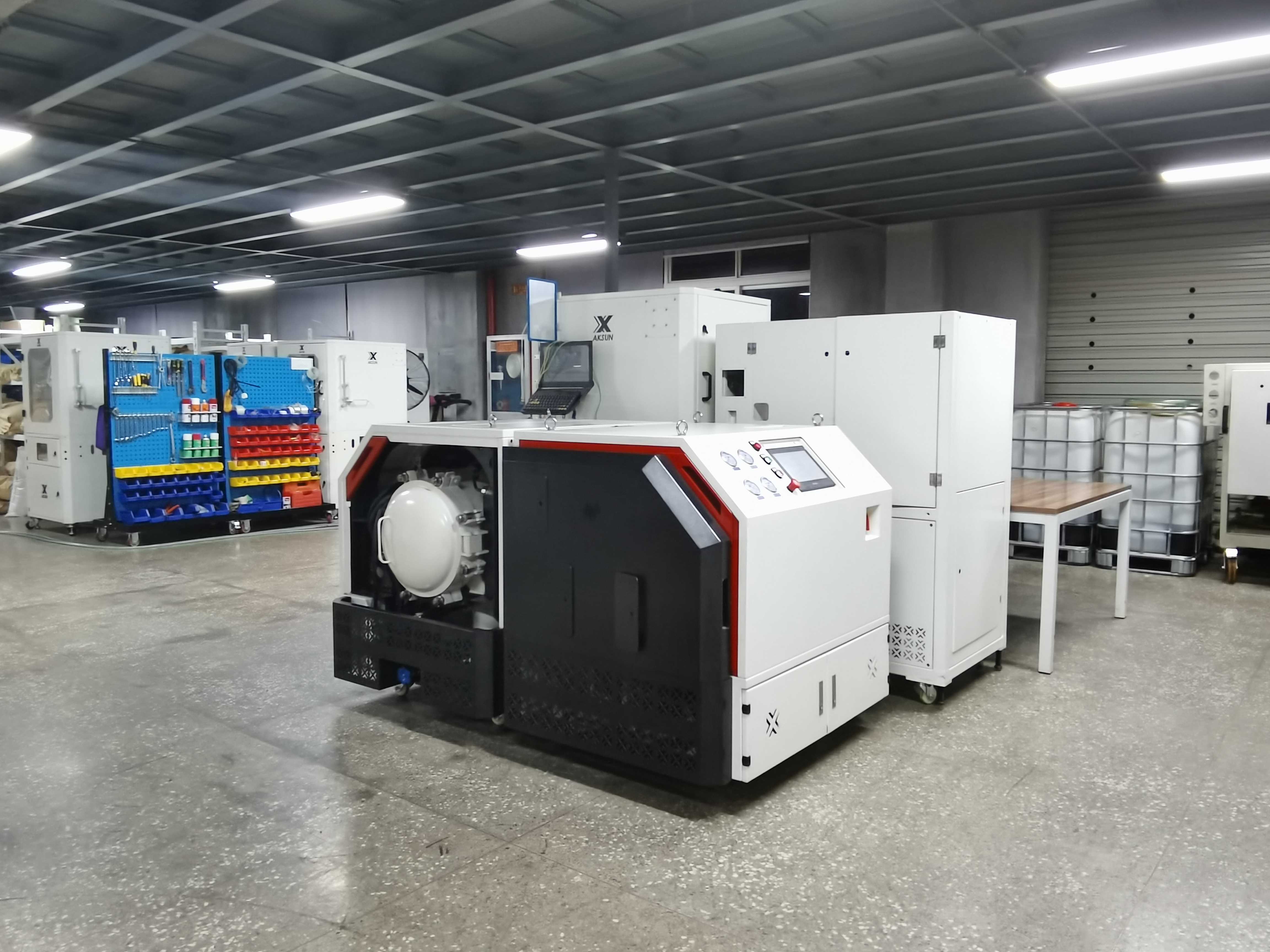AKSUN X-RF Series Lubricating Oil Regeneration Cycle Maintenance System
hydraulic system knowledge-what is hydraulic pollution?

Pollutants in hydraulic systems, in a broad sense, refer to various substances that are mixed in the working medium and harmful to system reliability and component life. Generally speaking, it is the solid particles, water, air, chemical substances, microorganisms and pollution energy mixed in the hydraulic oil. What we usually call pollutants in oil refers specifically to the mixed solid particles in hydraulic oil.
How do mixed solid particles do harm to the system? Solid particles of about 5 microns are easy to get stuck in the mechanical gap of the hydraulic system, causing blockage or component movement jamming, resulting in system instability, especially some such as high-precision servo valves, pilot valves, etc., large particles of 11-15 microns The above solid particles will aggravate the wear of hydraulic components, such as pump blades, chutes, half-moon rings, motor plungers, oil distribution plates, etc., leading to premature failure of the hydraulic system. Water will lead to corrosion of components, water emulsification of hydraulic oil will also cause unstable state of hydraulic fluid, reduce accuracy, and aggravate damage and failure of hydraulic oil. Gas will more easily cause cavitation of hydraulic components and cause control problems. Most users always wait until the hydraulic pollution is very serious before replacing new oil. However, hydraulic oil usually pays attention to maintenance and keeps the hydraulic system clean, not only is the hydraulic system more stable, longer life, and the overall maintenance cost is lower.
AKSUN X-RF series lubricating oil regeneration cycle maintenance system, using non-destructive ceramic filter element for physical maintenance, automatic cleaning cycle, no one-time waste filter element generation, belongs to the filter element micro-loss maintenance system, the lubricating oil is physically processed, and the filtration level is 1 micron, Effectively remove solid impurities in the hydraulic system, and remove water and gas after breaking the emulsification structure, so that the lubricating oil can obtain a new high-grade purification effect, reaching a new oil level of 7-8, take sampling inspection and regular maintenance, low-cost so that the hydraulic system is always maintained in good condition, to avoid more than 90% of the hydraulic oil, lubricating oil just because of pollution is discarded and the cost of environmental protection greatly increased, so that the utilization rate of lubricating oil, hydraulic oil higher, economical and environmentally friendly!

1. Environmental Protection: In recent years, the industrial and civil consumption of industrial lubricating oil in China is 8 million tons/year, which is a huge consumption. The expensive treatment cost of old oil and waste oil and the environmental protection is also a big problem. Waste lubricating oil is strictly prohibited from buying and selling at will and should be handed over to qualified waste oil treatment enterprises.
2. and economic benefits: for example, a hydraulic press or injection molding machine needs to be replaced in 1-2 years. the unit price of a barrel (generally 200L/barrel) is 2000-3500 yuan/barrel. a 300-ton injection molding machine usually needs 6 barrels of oil. if the oil is changed every two years according to the standard maintenance, 30 barrels will be consumed for 10 years of replacement, with a direct cost of 60000-100000. only the number of large and small injection molding machines in China is estimated to exceed 600000, based on an average of 5 barrels per unit, it is estimated that more than 3 million barrels of hydraulic oil are used, and the annual oil change cost is as high as 60-10 billion RMB, excluding the indirect environmental protection cost of oil-consuming treatment. The same problem also exists in hydraulic presses, grinders, shears, bending machines, transformers, construction machinery and other occasions where hydraulic oil is used. After adopting this technology, the cost can be reduced by more than 60%.
Other:
hydraulic oil failure (performance failure, pollution failure) often leads to significant losses, such as wear and tear of hydraulic components, corrosion, system instability, reduced equipment accuracy leading to product scrap or accidents.
This application can make the oil products close to or even exceed the conventional national standard oil grade through special filtration treatment technology and adding special additives, and provide market-oriented equipment and services that are easy for customers to purchase and use. It belongs to the research and development and manufacturing of maintenance and life extension technology and equipment, which can prolong the service life of hydraulic oil and lubricating oil used in machine tools (injection molding machines, grinding machines, hydraulic presses, power equipment, transportation engineering machinery, etc.) by 2-7 times, and equipment manufacturing and maintenance of hydraulic lubrication system.

our services:
1. detect oil products, purify undeteriorated oil, and remove mechanical impurity particles, water, gas, etc.
2. performance to improve abrasion resistance, rust prevention, oxidation resistance, compression resistance and pH adjustment.
3. hydraulic oil circuit oil tank \and lubrication system cleaning and maintenance
hydraulic system knowledge-what is hydraulic pollution?
1. Hydraulic System Pollution
pollutants in hydraulic systems, broadly refers to various substances mixed in the working medium that are harmful to system reliability and component life. Generally speaking, it is the solid particles, water, air, chemical substances, microorganisms and pollution energy mixed in the hydraulic oil. What we usually call pollutants in oil refers specifically to the mixed solid particles in hydraulic oil.
How do mixed solid particles do harm to the system?
2. Oil
small particles below 5 microns are easy to cause small gaps to be blocked and easy to plug; solid particles of 11-15 microns are easy to cause large gaps to aggravate wear;
the minimum size that can be distinguished by the naked eye is40um
human hair is about75um

10um particles and human hair magnified 100 times image
3. Oil Pollution Grade Standard

4. Hydraulic System
1. External pollution(cylinder rod, air filter, gap)
2. Contamination during assembly(rust skin, welding slag, dust, cotton fiber, etc. produced by thermal processing on the inner wall)
3. Pollution caused when the system is started.(oil tank bottom, pipe wall precipitation, etc.)
4. Internal pollution(incomplete cleaning, seal residue, oil tank inner wall treatment)
5. Wear(component wear, iron filings, etc.)
6. New Oil(special-shaped size, mixed old and new oil, oil filling container or appliance is unclean)
7. Pollution Caused by Maintenance(The operating environment is harsh, no pollution protection, and it is not cleaned after maintenance, etc.)



